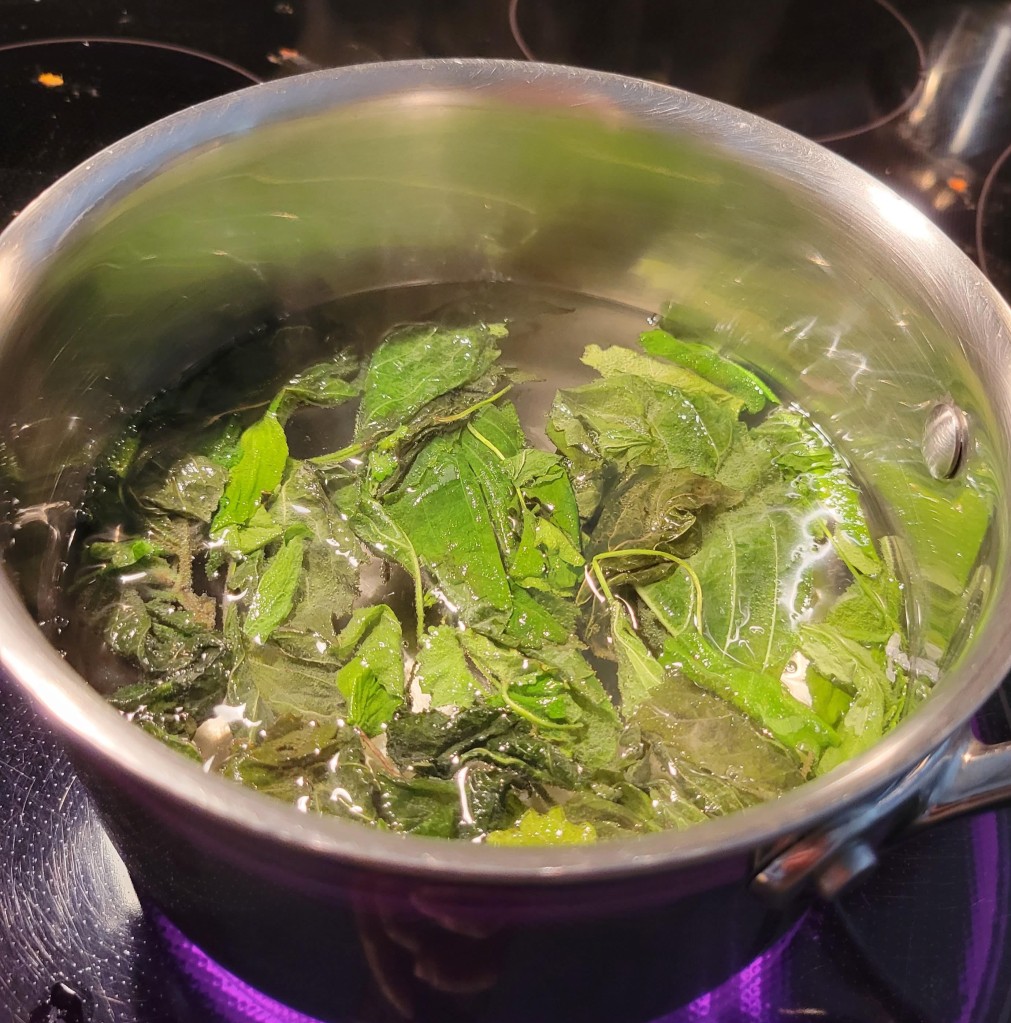And use them for medicine too!
This week, we showcase perilla, which is also variously known as shiso, perilla leaf, perilla mint, or beefsteak plant. These names all refer to Perilla frutescens, which—along with garlic mustard, Japanese knotweed, and autumn olive—is one of those weeds that ecology-minded folk love to hate.
Perilla has a long history as a food and medicine in Asian countries. This is probably why it was brought the United States in the first place, where it cheerfully hopped the garden wall and escaped into the wild. It has become very invasive since it was first introduced, disrupting ecosystems and displacing native plants.
Like other members of the mint family, perilla sports a stem with a square cross-section and leaves that grow in pairs on opposite sides of the stem. The leaves are ovate (that is, egg-shaped), and toothed along the margin. There is a purple variety of perilla as well, Perilla frutescens var. crispa, which is technically the only type which should be called shiso, since it that is the Japanese name for it. But even the regular perilla plants—the only kind I have seen in the wild—have purple tints on the underside of the leaf.

In addition to being invasive, perilla is toxic to herbivorous grazers. This means deer and other wild creatures are less likely to eat it, which could keep its spread in check. Cattle only eat perilla when other forage becomes less available, usually in the fall when perilla is flowering and at its most dangerous to them. Ironically, perilla ketones cause respiratory distress and atypical interstitial pneumonia in cattle that have eaten it; meanwhile, it is also used medicinally in humans to treat lung issues such as coughs, asthma and chest congestion.
What’s a forger to do? Help the environment by aggressively harvesting the perilla, of course!
If you like Asian dishes, there’s no shortage of perilla recipes (mostly Korean) on the internet. Many of the leaves are large enough to wrap around small morsels of food, like small spring rolls or pork dumplings. I might even develop my own paleo version of Kkaennip Jeon, pan-fried perilla leaves with meat stuffing. Stay tuned!
But food is not the only reason to harvest and use this invasive plant. Perilla’s medicinal applications include the afore-mentioned treatment of chest complaints; it also works as an anti-inflammatory, antioxidant, and antidepressant. Perilla additionally offers antimicrobial, anti-fungal, anti-allergy and possibly even anti-tumor effects. You can learn more about the medicinal side of perilla leaf through articles like this one, and this one, among many others.
NOTE: none of these statements about perilla’s benefits have been approved by the FDA. Nor am I a licensed herbalist. But my husband and I are currently both recovering from COVID, so I was particularly intrigued by its support for lung issues.
I boiled water with a few dried perilla leaves, along with some ground ivy (Glechoma hederacea, another invasive plant in the mid-Atlantic) and lobelia (Lobelia inflata), both of which also can help clear the lungs of congestion. (No, I did not measure the herbs before tossing them in the water.) We then took turns inhaling the steam from the pot to see if we noticed any difference.

We both felt an improvement in our ability to breathe following the steam treatment. My husband in particular said his chest didn’t feel as heavy, and the steam cleared some of the lingering congestion in his sinuses as well. Although he also remarked it was unpleasant keeping his face over the hot steam. I may have to research other delivery methods.
The liquid left over from the steam treatment can be strained and consumed as a decoction. However, a decoction may be less effective than steam because any medicinal constituents have to survive the digestive tract before making it into the bloodstream to reach the lungs.
Have you tried perilla either as a food or medicine? I would love to hear the experiences that other folks have had!